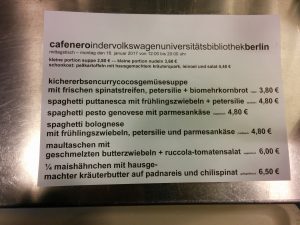In December I was invited by my old colleague and friend Dr. Kilian Oberleithner to return to the Technical University of Berlin to work on pulsed detonation combustion as part of Co-operative Research Center 1029.
On the way, I returned to Poitiers to visit Professor Peter Jordan at Institute Pprime again, this time for a few days. Peter was kind enough to spend several days with me, discussing some of the physics of jet screech and instability in supersonic jets. I got to see a lot more of Poitiers on this trip, and got to experience the classical European town in winter vibe:


Though it was only a short visit in Poitiers, it was extremely valuable, both for my own edification and in terms of plans for future collaborations.
From Poitiers, Laura joined me and we had a brief holiday, christmas in Paris then New Years Eve in Iceland. Both were remarkably beautiful in their own way, but I did learn a valuable lesson in aerodynamics from the coast of Iceland: when the wind is gusting somewhere in the 120-150kmh range, don’t try to open your car door:

From there it was onwards to Berlin, to meet up with Kilian and his PhD student Mo. Kilian is leading a team to design a plenum connecting a series of pulsed-detonation tubes to a turbine. This is an incredibly complicated task; even getting the pulsed-detonation tube to run consistently in the first place is highly challenging. Kilian is tackling the problem from an experimental perspective, so my visit was to help set up their schlieren systems. Luckily Kilian already had a very talented student working in the problem in Mo, who had achieved most of the setup objectives before I even arrived!

I spent three weeks working in the laboratory with Mo and Kilian, testing a range of experimental conditions. The pulsed-detonation tube is an exciting facility to work with; it sounds rather like a machine gun when it is operating (as demonstrated in this video from UT Arlington)
The flow field it produces is also amazingly complex. We used high-speed schlieren to study the shock-wave emitted from the end of the tube. The shockwave here is actually a special type, called a “detonation wave”, that results from the combustion of fuel under very specific circumstances. We examined a range of different nozzle configurations for the tube, though the work here was really just a preliminary look rather than a detailed parametric study. One example of the beautiful and complex hydrodynamic and acoustic features visible during the shock egress are shown in the animated image sequence below:

Working in Germany was a great experience, whether it was marveling at their incredible ability to compound words:

Or the fact that sometimes it snowed so hard it even snowed inside the laboratory (starring the very handsome Mo):
The highlight of the visit though was unquestionably having the chance to work with Kilian again, and getting to know Mo:


We concluded quite a successful measurement campaign in a manner typical for Berlin: eating giant schnitzels and drinking beer and schnapps:

Kilian and Mo continue to work on the PDC measurements, and I hope to visit Berlin once again at the end of the year to add my small part.